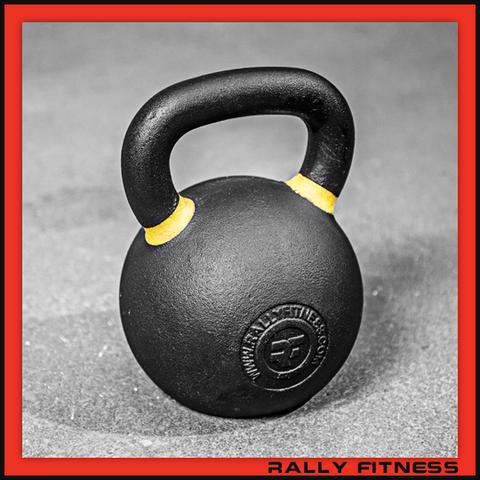- Continue Shopping
- Your Cart is Empty
Just Say NO to Drugs - Why Pain Pills are a BAD Idea

If you’ve spent any time around a CrossFit box, as either a participant or trainer, you’ve probably heard someone say, “My (pick a body part or muscle) is killing me! I need a dose of Vitamin I.” For newbies to this demanding workout, “Vitamin I” is not a real supplement. It’s a term for “Ibuprofen,” the very popular pain reliever and many hard-core CrossFitters take this over the counter (OTC) drug by the handful every day.
This is a mistake. Here’s why.
Ibuprofen is part of a class of drugs known as ‘Non-Steroidal-Anti-Inflammatory-Drugs’ (NSAID) and research has shown some serious side effects associated with regular use of these drugs. Other NSAIDs include: ibuprofen (Advil ® and Motrin ®) and naproxen (Aleve ® and Naprosyn ®). NSAIDs act in the body to block the chemical messengers involved in the inflammatory response which in turn reduces pain and swelling.
While this may seem like a panacea for pain - a quick fix that is available without a prescription - it’s not. There are several things to consider before throwing down a few of these non-prescription pain pills.
Many Professional Athletes Overuse Ibuprofen
According to the Wall Street Journal, "Ibuprofen has long been popular among athletes not merely to treat pain but to ward it off. But several studies in recent years have highlighted potential side effects including an increased risk of heart attack or stroke, kidney and gastrointestinal problems and even lower male fertility.”
Some physicians, such as Dr. Craig Lankford, a specialist in physical medicine and rehabilitation at Texas Back Institute in Dallas, believe that the popularity of Ibuprofen is being driven by professional and amateur athletes who overuse it. Many of his patients are unable to function properly because of unrelenting pain caused by conditions such as arthritis and injuries.
"Even though it is readily available and, in most cases, effective, Ibuprofen comes with many medical dangers,” Dr. Lankford said. It can cause damage to the stomach in the form of bleeding or perforated ulcers. Plus, if the patient has a kidney disease, taking too much ibuprofen can cause permanent damage to this organ.

OTC Meds Can Also Slow Healing
Writing for “CrossFit Sanitas” in Boulder, Colorado, Tom Baker notes, “No pain, sweet! However, while inhibiting the inflammatory response, NSAIDs also disrupt the healing process.
“Studies have shown NSAIDs to slow the rebuilding of muscle cells as well as disrupt healing of muscles, ligaments, tendons and cartilage. Another study showed a vast reduction in the bone and muscle strength after 4 and 6 weeks when animals were treated with ibuprofen.”
Thus, while NSAIDs may disrupt the pain transmission temporarily, the long - term rehabilitation of the causes for this pain is delayed and, in some cases, exacerbated. As has been noted by many medical experts, “pain is a sign that something is wrong and it is wise to heed this warning.”
Better Ways to Deal With Pain
There are other ways to deal with the pain caused by an aggressive WOD. Dr. Lankfort suggested avoiding ibuprofen and offered some alternatives to “Vitamin I.”
“For more holistic treatment of pain, there are supplements that do not require a prescription,” he said. “Many of my patients have had success using the herb turmeric, which contains curcumin, a substance with powerful anti-inflammatory and antioxidant properties.
“There has been some basic research on bananas, which are known to be an excellent source of potassium, and it suggests that it has anti-inflammatory properties. Fish oil is another naturally occurring substance that has been suggested to have anti-inflammatory properties for arthritic pain.”
Tom Baker has another approach. “Active recovery is my favorite way to get the soreness out, reduce swelling and recover. Mobilizing immediately after a workout is important, but even more critical is how you spend the rest of your day.
“If you are sitting at a desk, you are not producing adequate muscle contractions to push ‘pooled’ venous blood and lymphatic fluid along. By getting up every 45 min to an hour and doing a few squats, walking around the building, jumping rope or even doing a set of burpees can make a huge difference. Foam rolling is another excellent method to help improve venous/lymphatic return. A quick internet search and you can find one for under $12. Just keep the intensity low and recover actively.”
How do you avoid ibuprofen and deal with pain and soreness from your workouts? Let us know and we will share with our readers.Top 4 Things to Know About Building Muscle

When it comes to building muscle, protein is king. Knowing how much you need and what you can do to maximize your results in the gym can be a bit tricky. Whether you’re new to lifting or have been cranking it out in the gym for years, the key to building muscle is all about having an action plan AND following it. Here are the top four tips to building muscle with protein.
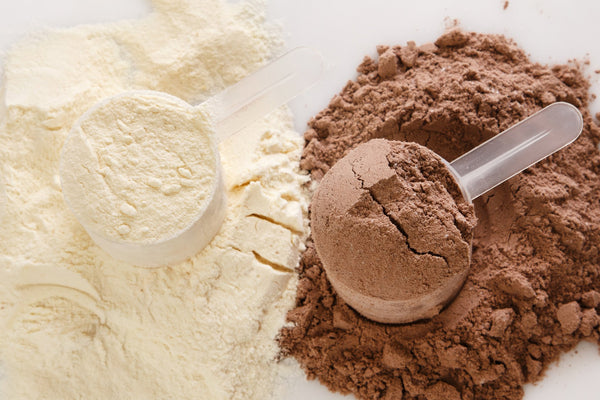
- Your timing is everything
If you’re trying to build muscle mass by using protein, then it is just as important to consider what you take as it is to consider when you take it. You want to study the various types of proteins and determine the best time to incorporate them into your daily schedule. For example, the two proteins in milk are casein and whey. Casein is a slow release protein and can provide a more gradual release of amino acids into your bloodstream than whey protein. That’s why getting your daily dose of casein in the evening can be a great way to get a steady supply of proteins throughout the night.

- Start small - not BIG
Don’t make the mistake of over-lifting or putting too much physical stress on your body too quickly. In fact, the heavier you lift doesn’t translate into more muscle mass. In fact, the key is to be consistent about how often you lift, not how much you lift. Studies have shown that when comparing those who lifted very heavy weights to those who lifted a moderate amount, the level of muscle built up was the same. In other words, by sticking to a constant schedule, of lifting at least three times a week, you can build muscle without having to lift crazy amounts.
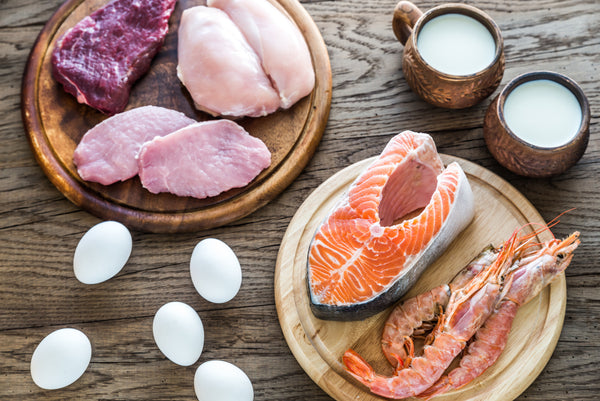
- Don’t forget the Leucine
Proteins are the drivers of building new muscle. Without a few key proteins, you will not be able to trigger the level of muscle growth that you want. Believe it or not, muscle production is set into motion by a special protein called leucine, a common amino acid found in most lean, high-protein foods. Making sure your diet is high in this protein can be the most effective way to maximize the amount of new muscle your body creates.

- It's all in the legs
To get your whole body in action, doing squats can be one of the most effective ways to jumpstart your muscle building. Leveraging how your body works to help you achieve your fitness goals is key. When you do leg work, your body is naturally producing human growth hormone. It is this hormone that is responsible for helping you build more muscle mass. If you only do cardio or work your upper body, you lose out on the amazing human growth hormone production that your lower body can provide.
For more tips and tricks on how to maximize your workouts, or to see how the pros are taking their workouts to the next level, see workout advice and latest news on Rally Fitness' blog.
Want to Burn Fat? Here are the 10 Best WODs to Get You There.

Different people have different objectives for taking up CrossFit. Flexibility, stronger muscles and stamina are on many wish lists but burning fat is pretty much at or near the top of everyone's goals. Why? Because fat sucks.
It can cause death, chronic diseases such as diabetes and heart attacks and, unfortunately, it suggests that the person carrying around that spare tire is a lazy couch potato. Of course, this final point is unfair, but life is unfair. So, deal with it and start shedding those pounds.
CrossFit: A Direct HIIT on Fat!
High Intensity Interval Training (HIIT) is a part of every CrossFit program and it is a pretty simple concept. According to this website, HIIT allows the participate to work harder, not longer. "You exert maximum effort through quick, intense bursts of exercise followed by short recovery periods. These intervals get your heart rate up and burn more fat and calories in less time—and more effectively—than Low Impact Steady State (LISS) exercise."
Studies published on this site show that HIIT improves insulin sensitivity by anywhere from 23-58%. This is crucial because insulin sensitivity helps boost fat loss. Dr. Len Kravitz, explains, "HIIT increases post-exercise energy expenditure because oxygen consumption and caloric expenditure remain elevated as the working muscle cells restore physiological and metabolic factors in the cell to pre-exercise levels. This translates into higher and longer post-exercise caloric burn.”
CrossFit trainers are experts in planning workouts of the day (WODs) that use HIIT to burn fat. However, even if you work out alone, you can still reap the benefits of this weight loss regimen. It's not easy and it won't happen overnight, but with some tenacity it will help you drop those pounds that can eventually kill you.
Let's see...living versus dying. Which do I want to do?
The Ten Best WODs For Weight Loss
#1 Tabata Mania
This WOD comes from Muscle and Fitness and Ariel Fernandez a CrossFit regional competitor.
Tabata pullups
Tabata pushups
Tabata situps
Tabata squats
You do as many reps as possible for 20 seconds, and then rest for 10 seconds for four minutes total (that's eight sets total). You can try each movement on its own—or combine them all.
#2 Nancy (Don't let the girly name fool you!)
This workout to burn fat comes from Pat Vellner and consists of:
5 rounds, as fast as possible, of:
Run 400m
15 overhead squats at 95lbs (65lbs for women)
The workout combines two grueling movements: a 400-meter run and an overhead squat. After each lap around the track, the last thing you'll want to do is snatch the bar from the floor and start squatting but that's the deal!
#3 Helen
From "Men's Fitness," Helen features a combo of cardio and strength. This WOD for fat loss is done for time, with the idea that you’ll beat your previous record in subsequent sessions. The combination of running and kettlebell swings really revs up metabolism. The pullups add some multi-joint strength work to build calorie-burning muscle.
Three rounds for time:
400m run
21 kettlebell swings at 53 pounds
12 pullups (band-supported if needed)
#4 Kelly
This workout involves more running than the average lifter is used to but getting up the heart rate is a great way to cut body fat.
5 rounds, as fast as possible, of:
Run 400m
30 box jumps — 24” (20” for women)
30 wall balls with a 20-lb medicine ball (16lbs for women) shot at a 10-foot-high target (9' for women)
#5 Jackie
This workout to burn fat comes from Conor Murphy, a coach at Reebok CrossFit One and a member of CrossFit HQ’s seminar staff. If done right your basal metabolic rate will be elevated for hours after you finish.
As fast as possible:
1000-meter row
50 thrusters (45lbs)
30 pullups
#6 Newport Crippler

According to Men's Journal, "This WOD actually gets easier(ish) the more pounds you drop. It’s a great benchmark as you’re losing weight, as the squats get lighter as you do. There’s nothing like a brisk run after a heavy leg workout to make you feel light on your feet, right?"
For time:
30 back squats loaded with your body weight equivalent
1-mile run
#7 Burpees for (gulp) 7 Minutes
Nothing harder than burpees, so let's do seven minutes worth!
In 7 minutes:
Do as many burpees as possible
#8 Kettle-Hell
This WOD comes from Sam Orme who owns CrossFit Virtuosity in Brooklyn. It lives up to its name!
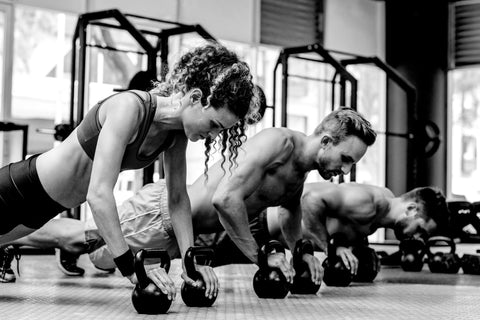
5 rounds, as fast as possible, of:
16 double kettlebell swings at 24kg (16kg for women)
14 double kettlebell front squats
12 double kettlebell walking lunges (6 per leg)
10 double kettlebell push presses
80m double kettlebell farmer’s carry
#9 Balls to the Wall
This one is grueling and simple, or simply grueling. It's 150 wall balls.
For time:
150 wall balls at 20 pounds with 10-foot target (stopping before complete failure)
Target times:
Level 1: 8:00-10:00
Level 2: 5:00-8:00
Level 3: 4:00-5:00
Elite: < 4:00
#10 Murph
This WOD comes from Dan McCarthy owner of Brooklyn's Crow Hill CrossFit. It this one doesn't kill you, you will lose some serious weight.
For time:
1-mile run
100 pullups
200 pushups
300 air squats
1-mile run
Do these WODs and you will soon be lean and mean. Fat? What fat?
Don't forget to check with your trainer ensure that you are physically prepared for them.
Do you have a favorite CrossFit WOD to burn fat?
Contact us and we'll share with our readers.
Design the Ultimate Home Fitness Strategy
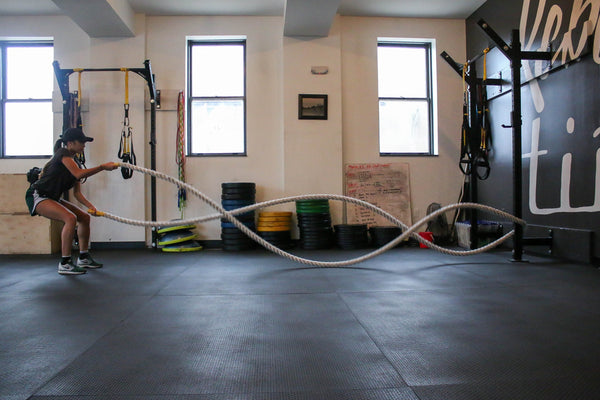
Depending on your fitness and workout goals, a home-gym might be good solution for establishing your home fitness strategy. You can start assembling your home gym for under $100. The key to starting a home gym is in how you craft your space and fitness strategy. Whether you’re working out a few days after work or hitting your home gym hard every morning before leaving the house, your success will be tied to establishing a consistent home workout routine. To get you started, here are the most important things you’ll need to take your home fitness progress to the next level.
Gather essential home equipment. First things first. You’ll need to have the right equipment when starting a home gym to make sure you’re working out the right way. If you’re looking for a complete home gym package, then these Rally Fitness equipment packages are a great place to start. Even if you’re not ready for a complete home gym, getting smaller items like medicine and wall balls can be just what you need to start your home gym regime. But, if you’re an experienced fitness buff and are looking for a more intense at-home workout, then adding plyometric boxes to your at-home gym could help you get the most out of your exercise time.
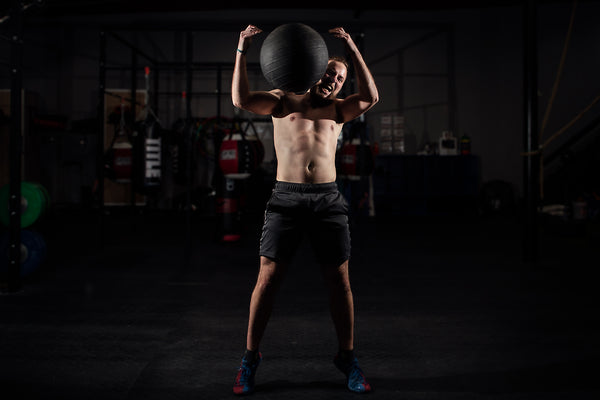
Add in variety to stay motivated. Mix in a healthy dose of cardio and weight training throughout the week to be sure you’re working all of your core areas. Adding weighted ropes and kettlebells to your home gym arsenal are great ways to get a variety of exercises in your daily routine. Yoga and Pilates added in with consistent weight lifting and cross training are great ways to tap into other exercise methods without tiring your body out. Learning to leverage a combination of physical activity can be the best way to maintain an at-home workout routine.

Don’t be afraid to take a day off. Just because the gym is in your home, doesn’t mean that you have to use it every day. It is important to be consistent with your workouts, but it is equally important to give your body the time to recover, heal and repair. To avoid overworking yourself, try writing your weekly workout goals down and keep track of how often and what exercises you do. This way you can be sure that you are not overdoing it with some exercises and not doing enough with others. With a home fitness strategy, “slow and steady” will always pay off big in the long run.
If you’re considering creating your own at-home gym or want to add a few must-have fitness tools to your existing home workout routine, browse Rally Fitness fitness equipment today.How CrossFitters Can Avoid or Treat the Pain of Plantar Fasciitis
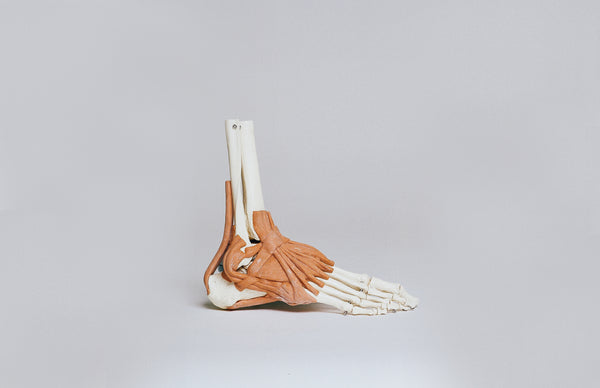
Anyone who participates in a high-impact workout program like CrossFit understands its risks and rewards. The rewards are both physical and mental – a leaner, stronger body, better cardio health, stronger bones that result from resistance and weight training and greater self-esteem that occurs when difficult challenges are met. On the downside, the risks include injuries to areas of the body that are vulnerable to repetitive stress from all that jumping, running and lifting found in the WODs.
One of the most common repetitive stress injuries for CrossFitters is plantar fasciitis. In nutshell, this an inflammation and degeneration of a thick band of tissue that connects the heel bone to the toes. It is extremely common among those who spends a lot of time on their feet – about 3 million people each year in the U.S. develop plantar fasciitis - but the percentage of athletes with this condition is much higher than non-athletes.
An Ankle and Foot Surgeon Unpacks Plantar Fasciitis
Dr. Christopher Sakowski is an orthopedic surgeon in the Dallas-Fort Worth area who specializes on treating conditions of the ankle and foot. He is also on the referral line of Texas Health Spine & Orthopedic Center. Dr. Sakowski outlines the most common causes of plantar fasciitis.
"It is thought to arise from a biomechanical issue," he said. "Repetitive microtrauma in the region of the plantar fascia (heel of the foot) causes a degeneration of the fibers at the attachment to the calcaneus – the connecting tissues between the heel and toes.
“The term 'fasciitis' is somewhat a misnomer, as it implies inflammation. This condition really this is more of a degenerative condition. Certain mechanical factors such as a flatfoot deformity (or pronation of the foot), which is associated with tight calf muscles, is thought to be a risk factor. Other contributors to the condition include a recent increase in activity, training (or prolonged standing) on a hard surface such as cement or poorly cushioned shoes."

Orthopedic specialists and CrossFit trainers also know that there are often compensatory injuries, since CrossFit fanatics have a tendency to push through their injuries. For example, knee pain that occurs due to a change in gait from a foot injury or pain in the other foot after a chronic injury on the opposite side.
Preventing Plantars: Stretching, Shoes and Orthotics
What can a serious runner or CrossFitter do to avoid getting this injury?
"A good calf stretching program is always recommended prior to any training regimen to help avoid injury," Dr. Sakowski said. "This will also help prevent developing plantar fasciitis. Also, check your shoes regularly to ensure they are well-padded and supportive. Depending on frequency of use, running shoes may need to be replaced as often as every 6 months."
Dedicated CrossFitters understand the importance and the challenge of choosing the correct shoes for a program that has such a wide range of activities – running, weight training, jumping – in a typical WOD.
"I often see my CrossFit patients wearing shoes that are either inappropriate for the activity or shoes that are broken down," noted Dr. Larry Huppin, a Seattle podiatrist.
"Despite the fact that there are many shoes marketed as 'CrossFit Shoes,' there is no one perfect shoe for CrossFit as the activities are just too varied. In fact, theoretically, you should have three types of shoes for CrossFit:
- One pair of shoes for lifting
- One pair for jumping
- One pair for cardiovascular fitness (running)

"However, it is not practical to expect participants to change shoes each time they move from, say, a box jump to a clean and jerk. Thus, it is important to find a shoe that offers the best protection possible for all of these activities.
"Of all of the activities done during CrossFit, weight-lifting is the most technically difficult and the activity that requires the best form in order to prevent injury. So, it is my recommendation that CrossFit athletes focus on getting a very good pair of weight-lifting shoes that also will offer some protection for jumping and cardiovascular activities."
Dr. Huppin, who is himself a CrossFit athlete, recommends several training shoes, and you can get a look and overview of these by clicking here.
Another factor that can help prevent plantar fasciitis in an orthotic shoe insert. Dr. Huppin explains.
"The purpose of any orthotic is to reduce stress on tissue that is prone to injury or is already injured," he said. "For example:
- If a patient is having trouble with plantar fasciitis the goal of an orthotic is to reduce tension on the plantar fascia by limiting arch collapse.
- If a patient is prone to metatarsal stress fractures, the orthotic is prescribed to reduce force through those specific metatarsal bones.
- If a patient is prone to 'runner's knee' or 'jumper's knee' due to excessive foot pronation, the orthotic should function to limit that pronation and help keep the knee in proper alignment."
Treatment for This Condition
"Surgery is very rarely performed for this condition," Dr. Sakowski said. "Initial treatment always focuses on a good home stretching program – both for the calf muscle as well as a plantar fascia-specific stretch. That, in combination with some well-padded gel heel cups, typically alleviates symptoms, although they can persist for many months.
"If these conservative treatments fail and patients are particularly symptomatic in the morning, sometimes using a night splint to keep the foot stretched overnight is helpful. In rare cases, more serious measures are required.
"Although steroid injections can be performed for plantar fasciitis, I try to avoid this if at all possible as they are associated with a significant risk of plantar fascia rupture and typically only last a short time. Platelet-rich plasma (PRP) is becoming a more popular treatment for plantar fasciitis, although there is a lack of good clinic evidence supporting its efficacy. Finally, extracorporeal shock wave therapy (ESWT) is another non-surgical option that has been found to be very effective for recalcitrant plantar fasciitis, if all other treatment options have failed to provide relief."
Have you had to deal with plantar fasciitis in your CrossFit workouts? If so, what worked to get you back in the gym, pain-free? Click here with your story and we will share with our other readers.
Food Confessions of a Fitness Fanatic: "I Cheat 2 or 3 Times a Month!"

It's been said that "men and women do not live by grilled chicken and vegetables alone." Actually, nobody ever said that, but they should have!
Smart nutrition is an important part of gaining strength and stamina from an aggressive training regimen like CrossFit. Nobody argues with this. Food is fuel and it takes some high-octane fuel – not empty calorie crap – to power a grueling workout and its recovery.
Having a diet that helps to regrow the muscles shredded by vigorous exercise and lifting is a given. However, this doesn't mean cheating on a meal of high-calorie foods is out of the question. In fact, some fitness experts feel strongly that this "cheat meal" is an important part of maintaining motivation to hit the gym 3 or 4 times a week and eating good-for-you food every day.
There are several ways to eat the foods you crave – pizza, pasta, hamburgers, ice cream and every other "bad" food you've ever been warned about – without blowing all the work you've been doing in the gym. It involves cheating 2 or 3 times a month.
Cheating to Win
We've all heard that maintaining a healthy weight is simple physics - calories in and calories out. Actually, it's not quite that simple. Part of the trick of getting leaner and (oh yes!) meaner involves maintaining a positive mental attitude. This is where a cheat meal can really supercharge the process.
To be clear, this does not mean you should binge on junk for days at a time. The best effects of this counterintuitive strategy come from cheating on ONE MEAL, a couple of times each month.
"A cheat meal is high in calories and all macronutrients—protein, carbs, and fat—and is not something that would normally be part of a proper diet plan," says BuiltLean nutritional scientist Eva Lana. "It's not to be confused with a cheat day, which is an eight- to 12-hour window in which you go outside of your diet and straight out binge."
She notes that a cheat day is recommended for those who are serious, competitive athletes and body builders. A cheat meal is best for the rest of us.
According to an article in Men's Fitness, "When it comes to cheating (on meals, that is), there are two hormones you need to be concerned with: leptin and ghrelin. Leptin is the 'hunger hormone.' It's mainly produced by fat tissue, and it regulates your appetite and energy stores. Grehlin is a hormone mainly produced by the stomach. It's an appetite stimulant that signals the release of growth hormone.
Periodic cheat meals that are higher in calories and carbohydrates can help raise leptin levels and lower ghrelin. "When your hormones return to normal, they can help reverse or even prevent any negative effects on metabolism, hunger drive, and energy expenditure. What's more, the piece notes, the increased calories may also help to increase thyroid function, further boosting metabolism. This means that a scheduled cheat meal may actually help optimize the body’s hormones to avoid weight loss plateaus and prevent chronic metabolism depression.
Again, it very much about motivation. Many nutritionists believe that looking forward to a few slices of pizza or steak and baked potato (complete with butter, sour cream and bacon bits!!) on Friday will help the athlete make better choices on Wednesday.
Tips for a Successful Cheat Meal

#1 Stick with a Schedule
It is important to plan when the cheat meal is going to occur and then stick with this plan. This is often more difficult than it seems because food urges can sneak up on you.
#2 Indulge but Don't go Overboard...Especially if You are Prone to Binging
Eat your favorite food, for one meal but don't go crazy. If it is Mexican food, eat the enchiladas and stay away from the guacamole and chips.
#3 Continue Your Workouts
It's very important to work out before and/or after feasting; it can actually promote bigger, better gains.
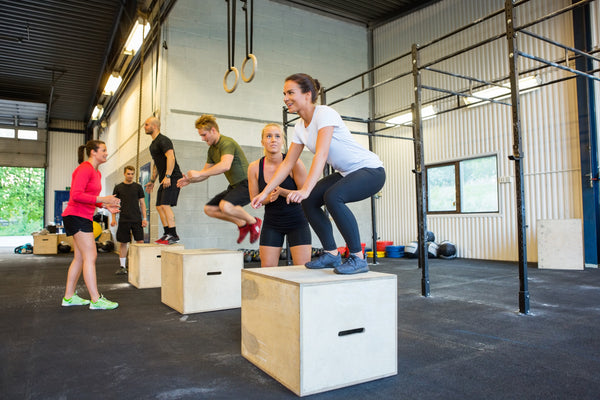
"If I have a cheat meal, I know that I’ve consumed a lot of calories, and I want to burn them off. So, I might want to go heavier metabolically—like going for a high-intensity workout or lift heavier that day, or throw in some extra plyos to continue to burn calories after I’ve stopped.”
Rebecca Kennedy
Creator of A.C.C.E.S.S.
"I vary my workouts between HIIT, Olympic Lifting, heavy days of big muscle group training (bench press, back squats, front squats, pull ups, etc.) and kickboxing. Because I train with a lot of intensity, I'm not as worried about counting calories. I enjoy what I’m eating and move on. If I'm not training hard, I don't usually crave an ‘off’ day as much.”
Ashley Borden
Fitness and Lifestyle Consultant
#4 Customize Your Cheat Meal
People who are in large calorie deficit (more than 750 calories per day) need a cheat meal more often than those with smaller calorie deficit.
"Leptin concentrations (hunger hormone) typically reflect total body fat mass; the leaner your physique becomes, the less leptin your body produces, at which point eating cheat meals is more ideal. All in all, you need to recognize the changes in your body and how your body reacts to different cheat meals."
Eva Lana
BuiltLean
#5 Avoid Empty-Calorie, Sugar-Laden Nutrient Poor Foods
The best approach is to go for a well-balanced meal that is higher and carbs and calories than the normal (training) meal.
The Best Choices for a Cheat Meal
There are as many opinions on the BEST cheat meal food as there are cheaters. However, the fitness experts suggest the following as good choices:
- Omelet with cheese, spinach and mushrooms
- Cheeseburger with the bun
- Bitter chocolate
- Two slices of pizza
- Pasta dish with protein source
- Chicken or shrimp fajitas with two tortillas
- Chick stir fry with rice or noodles
- Nachos with extra cheese
5 Sure-Fire Ways to Recover from a CrossFit Workout and Get Stronger in the Process

You may have done 5 rounds of 20 reps of wall ball shots, lifted 4 sets of your 12- rep max for bar bell thrusts, swung the kettlebell 4 set of 15 reps, box jumped your butt off, climbed the rope to heaven and back and done everything else on the workout of the day (WOD) whiteboard, but you know what? You haven't gained an ounce of muscle from your CrossFit hell...yet.
Muscle growth can only happen AFTER you've stopped the workout and that makes your recovery strategy critical. As pointed out by Bodybuilding.com, "Muscles don't grow in the gym; they grow after. When you lift heavy, muscles suffer micro-tears and are actually broken down via a process called catabolism. Immediately after you lift, your body begins repairs, but it needs your help."
5 SURE-FIRE WAYS TO SPEED UP MUSCLE RECOVERY POST WORKOUT
#1 Avoid Utter Exhaustion
For those athletes who have heard the phrase "no pain, no gain" since they first started a fitness program, this first workout recovery tip seems counter-intuitive if not downright blasphemy! While it is important to push oneself beyond that which is comfortable, it is not necessary to push past exhaustion EVERY time they open the box.
The best advice is to push yourself past what you did in the previous workout. Pushing the muscles just to the point where they can be repaired with rest and recovery is the optimal approach. Most (good) CrossFit trainer can help you determine this workout calculus.
#2 Proper Pre and Post Nutrition Can Speed Recovery
Most CrossFit athletes understand the importance of post-workout nutrition – that's why there are so many people walking around, drenched in sweat and drinking a protein shake! However, the food consumed before the workout can also play an important role in post-workout recovery. As noted in a recent article, "Digestion is a lengthy process; proteins and carbs that you ingest prior to the workout will still be circulating in the body afterward. For this reason, choose your foods wisely. Make sure you get high-quality, lean protein along with some complex carbohydrates, especially if you plan on an intense workout. I recommend consuming your meals roughly two hours prior to your workout to avoid digestive issues or cramps." The potassium found in bananas is also an excellent recovery fuel.
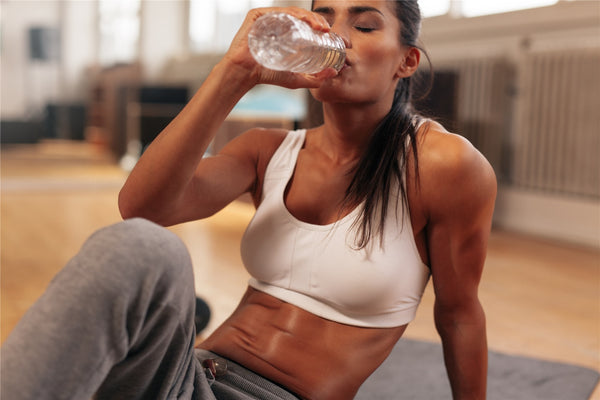
Post-workout protein, especially whey, is vital if you haven't eaten anything for hours. Aim for 20-50 grams of protein after each workout depending on your bodyweight. Most women will do fine with 20 grams, while men should aim for the upper range.
#3 Post-Workout Stretching is Necessary for Muscle Repair
This is an often overlooked tip for workout recovery, since many CrossFitters view stretching as a monumental waste of time. However, fitness experts and body builders know that proper stretching of exhausted muscles not only jump-start the recovery process but also build flexibility that allows for more muscle gain in most compound lifts.
#4 Take A Hot Bath, Get Some Sleep and Hydrate!
Speeding up muscle recovery does not have to be complicated. According to trainer, Dan DeLisle, "A hot bath is another great way to foster a faster recovery. This will increase blood circulation to the muscle tissue, which then means greater oxygen and nutrient delivery – two things that your tissues need for repair. A hot bath before bed can also lull you to sleep easier, and sleep is another very vital part of the recovery equation.

"If you aren’t getting at least 8 hours of sleep per night, it could be one reason you aren’t seeing the recovery you hope you would. Stay away from the alcohol and caffeine several hours before bedtime, but drink plenty of water."
#5 Take 2 or 3 Days Off Every Week
Muscles that have been torn down by extensive work need a few days every week to repair themselves. DeListle notes, "The professional athlete standard of no days or only one day off per week will likely not be enough for those of us doing intense CrossFit training sessions. Instead, aim for two or three days off per week from all intense exercise.
"Do some leisure exercise if you wish, schedule mobility or yoga classes as mentioned previously, but most importantly, re-energize yourself for the week ahead."
Do you have a post-workout tip for helping tired, sore muscles recover quicker? Contact us and we will share with our readers.
What are the Top 10 Fitness Trends for 2018? They Might Surprise You.
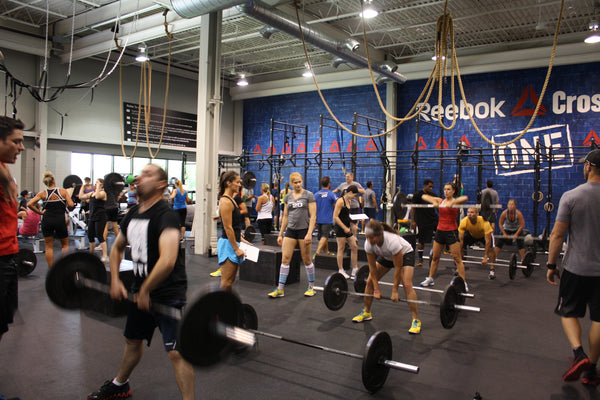
The start of a new year brings with it the usual predictions on what is about to be hot and what’s not. Based on your reading this blog, you are most likely interested in personal fitness trends for the coming year. Well Sparky, you’ve come to the right place because the granddaddy of all fitness surveys was released about a month ago and you can read all out what these folks think you’re going to be doing to work up a sweat in 2018!
The American College of Sports Medicine (ACSM) surveyed more than 4,000 fitness professionals, and here’s the hottest trend for the coming year. Drumroll please!!!
High Intensity Interval Training (HIIT) is forecast as next year’s most popular trend in fitness. HIIT training is made up of bursts of all-out exercise followed by short periods of rest for recovery.
“High intensity interval training has been a consistently high-ranking trend on the forecast in recent years, appearing in the top three since 2014,” said Walter R. Thompson, Ph.D., FACSM, president of ACSM and the lead author of the survey and associate dean in the College of Education & Human Development at Georgia State University in Atlanta. “Even though survey respondents warned of a relatively higher risk of injury associated with HIIT, it continues to be very popular in gyms across the world.”
Is HIIT Dangerous?
A press release from the ACSM noted that survey respondents were concerned that some of their clients are reluctant to participate in HIIT due to perceived risks, and the fitness pros often shared those concerns. So, is HIIT dangerous?
“HIIT offers participants a good workout that can be done without a lot of time or equipment,” continued Thompson. “Research shows that with proper precautions, like working with a certified personal trainer, HIIT can be a safe, effective and fun way to exercise.”
Those involved with CrossFit training will not be surprised by the popularity of HIIT, especially as it relates to having a professional trainer running the show. In fact, the popularity of CrossFit has had a significant impact on this fitness survey.
The press release further noted that the survey, now in its twelfth year, “helps the health and fitness industry make critical programming and business decisions. ACSM expanded this year’s survey to include partner organizations in the Coalition for the Registration of Exercise Professionals® (CREP), and the 4,000 respondents set a record that more than doubled that of previous years.
The survey provides 40 potential trends to choose from, and the top 20 were ranked and published by ACSM.
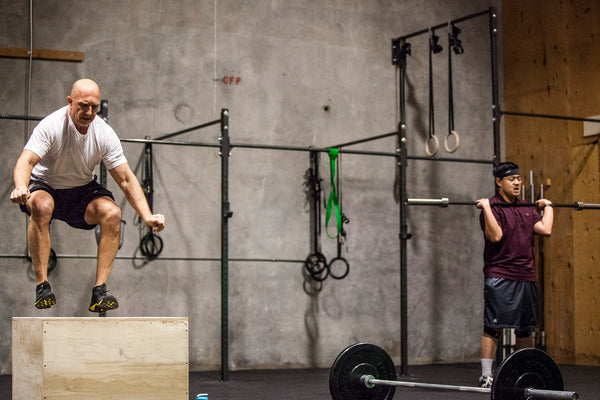
The top 10 fitness trends for 2018
- High-Intensity Interval Training (HIIT): HIIT involves short bursts of activity followed by a short period of rest or recovery, these exercise programs are usually performed in less than 30 minutes.
- Group Training: Group exercise instructors teach, lead and motivate individuals though intentionally designed group exercise classes. Group programs are designed to be motivational and effective for people at different fitness levels with instructors using leadership techniques that help individuals in their classes achieve fitness goals. Again, this is a reflection of the increased popularity of group training program such as CrossFit.
- Wearable Technology: includes fitness trackers, smart watches, heart rate monitors and GPS tracking devices. Being able to download this fitness data to social media and thereby use if for motivation and bragging rights, is an ancillary reason for the popularity of this trend.
- Body Weight Training: Body weight training uses minimal equipment, making it more affordable. Not limited to just push-ups and pull-ups, this trend allows people to get “back to the basics” with fitness. This is another trend that owes its popularity to CrossFit training.
- Strength Training: Strength training remains a central emphasis for many health clubs and more specialized programs such as CrossFit. The ASCM reports noted that “Incorporating strength training is an essential part of a complete exercise program for all physical activity levels and genders. (The other essential components are aerobic exercise and flexibility.)”
- Educated and Experienced Fitness Professionals: Given the large number of organizations offering health and fitness certifications, it’s important that consumers choose professionals certified through programs that are accredited by the National Commission for Certifying Agencies (NCCA), such as those offered by ACSM. The CrossFit trainer certification is also a comprehensive and rigorous accreditation.
- Yoga: Based on ancient tradition, yoga utilizes a series of specific bodily postures practiced for health and relaxation. This includes Power Yoga, Yogalates, Bikram, Ashtanga, Vinyasa, Kripalu, Anurara, Kundalini, Sivananda and others.
- Personal Training: The report of this survey notes that “More and more students are majoring in kinesiology, which indicates that they are preparing themselves for careers in allied health fields such as personal training. Education, training and proper credentialing for personal trainers have become increasingly important to the health and fitness facilities that employ them.”
- Fitness Programs for Older Adults. The demographics don’t lie. As a population, we are living longer and as the baby boom generation ages into retirement, some of these people have more discretionary money than their younger counterparts. Therefore, many health and fitness professionals are taking the time to create age-appropriate fitness programs to keep older adults healthy and active.
- Functional Fitness. This is a trend toward using strength training to improve balance and ease of daily living. This type of functional training is the essence of CrossFit and many believe this trend will continue to rise over the next few year. Part of this reason is that functional fitness and special fitness programs for older adults are closely related. See #9 above.
The full list of top 20 trends is available in the article "Worldwide Survey of Fitness Trends for 2018."
What do you think of the results of this survey? Is it accurate or BS? Let us know what you think. Need a quote for CrossFit equipment? Just click here and we’ll get back to you pronto.CrossFit Beats Boredom and Traditional Gyms are Taking Notice
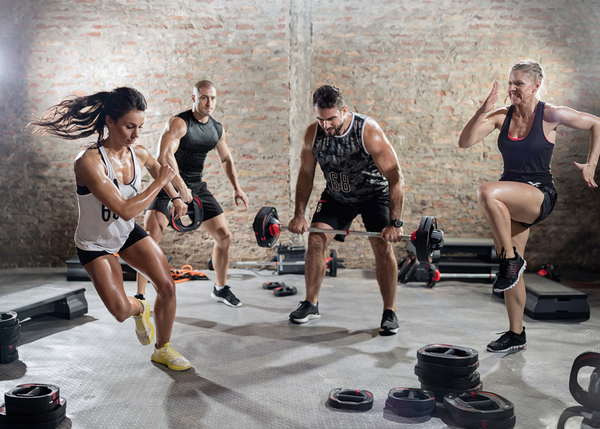
When a newbie walks into what is usually an industrial-looking CrossFit facility, she or he will likely notice some things that are very different from the stainless steel and glass, big box “retail” gyms. First, the traditional health clubs are packed during January and February with well-meaning, overweight but unfocused participants and then ghost towns for the rest of the year. While the CrossFit box is buzzing with the about the same number of participants year-around and they are laser-focused on achieving fitness goals.
There is another big difference between CrossFit and traditional gyms which the fitness industry has started to notice. For several decades, the traditional facilities have featured row after row of cardio and weight machines. There have never been any cardio or weight machines in CrossFit gyms. In fact, the functional training (free weights, rope climbing, intense HIIT training, etc.) done in a group setting and led by an experienced fitness expert is EXACTLY what sets CrossFit apart from traditional health clubs.
Don’t look now, but the shiny retail facilities are wising up to the popularity of CrossFit training. They are replacing those cardio and weight machines with free weights and group training.
Rage Against the Machine
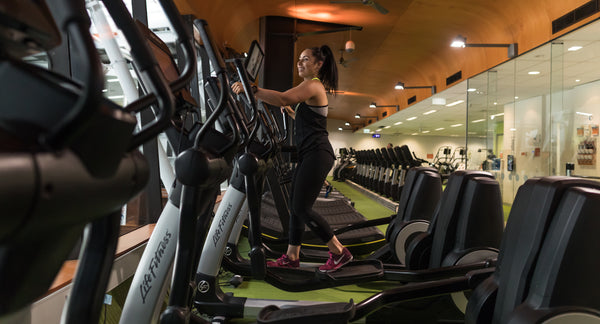
According to a recent article in the Wall Street Journal, Charles Huff, the vice-president of facilities for 24-Hour Fitness noted that the 420-location chain has scaled back cardio and weight machines to 50 percent of floor space from about 66 percent it had allocated previously. The traditional health club “now devotes the other half of floor space to free weights and functional training, which includes things like kettlebell swings and body-weight exercises with TRX suspension straps. It has also expanded its studio group exercise classes.”
The article continued by noting that “stair-steppers” and some elliptical machines in particular are waning, but stepmills continue to enjoy some popularity. Leg and shoulder presses remain popular in these traditional gyms, while narrow-focus ones such as inner/outer thigh machines “gather dust.”
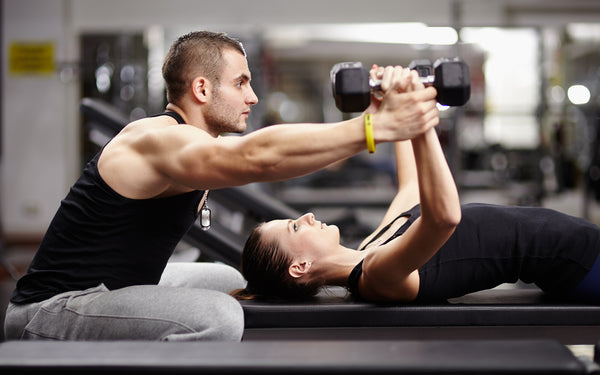
The piece pointed to several trends driving this shift away from machines. “Boutique fitness is booming and many of those studios focus on guided workouts with few or no machines. Some members of CrossFit gyms, meanwhile, are migrating to less expensive health clubs with newly added or expanded barbell weightlifting facilities.”
A primary driver of this trend on the part of big box health clubs has nothing to do with machine/anti-machine client preferences. It is the oldest business motivation there is: MONEY. “Trainer-led sessions generate extra revenue where a treadmill or weight machine can’t.”
CrossFit: Boring it’s Not
The popularity of CrossFit training has forced many heretofore successful traditional clubs to “up their bars” for club members in order to remain profitable. The days when participants would arrive at the gym and immediately jump on a treadmill or elliptical and stay there for a half-hour are over.
Why? It’s BORING and anything boring starts to feel a LOT like work.
The group exercises and more intense training pioneered by CrossFit challenge (some would say “beat down”) participants and successfully completing this often grueling training brings about an esprit de corps among the class member. This leads to a greater wiliness to push one’s comfort boundaries and results in better results.
CrossFit training may be hard, but it is seldom boring. Boredom is the bane of most fitness programs and it is the reason that come March, that traditional health club, with its row after row of machines, will once again be a ghost town. While over at the CrossFit box, the participants will be gasping for air, struggling with kettlebells, free weights and tire flips, screaming encouragement to their new friends in the class and kicking butt.
Contact us and tell us.
Feeling Boxed In By CrossFit? Ready To Take Your Knowledge To Your Own Garage Gym Instead?
If the answer is “yes”, then you’re not alone! While CrossFit gyms exploded in the years 2011 through 2015, the once massively popular, cult-like, gritty exercise regimen has slowed down in popularity and appears to be in a consolidation phase, likely due to a confluence of events.
Continue Reading → View full article →
